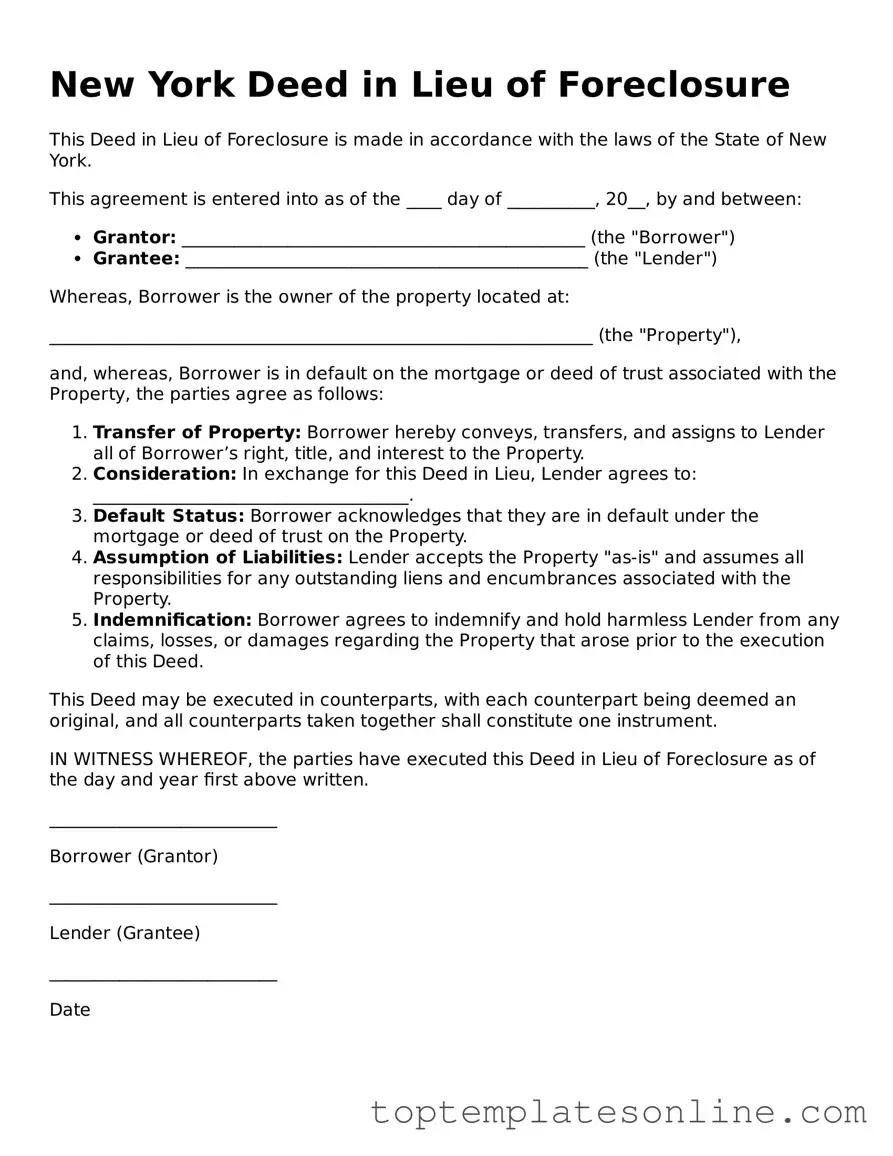Blank Deed in Lieu of Foreclosure Template for New York State
A Deed in Lieu of Foreclosure is a legal document that allows a homeowner to transfer the title of their property to the lender in order to avoid the foreclosure process. This arrangement can provide a more amicable solution for both parties, as it helps the homeowner escape the burdens of an impending foreclosure while allowing the lender to recover their investment. Understanding the nuances of this form is essential for anyone considering this option in New York.
Customize Deed in Lieu of Foreclosure Here
